Ruralite
WEST OREGON
DECEMBER 2024

The Little Schoolhouse That Could
A group of dedicated volunteers is working hard to renovate the old Necanicum Schoolhouse Page 4
BY SCOTT LAIRD




































































DECEMBER 2024

The Little Schoolhouse That Could
A group of dedicated volunteers is working hard to renovate the old Necanicum Schoolhouse Page 4
BY SCOTT LAIRD



































































December 2024 • Volume 72, No. 12
CEO Michael Shepard
SENIOR VP OF CONTENT Leon Espinoza
EDITORIAL DIRECTOR Chasity Anderson, CCC
DEPUTY EDITORIAL DIRECTOR
Noble Sprayberry
SENIOR EDITOR Jennifer Paton, CCC
ASSISTANT EDITORS Victoria Hampton, CCC; David Herder, CCC
ASSOCIATE EDITORS
Valeri Pearon, Nina Todea
PUBLICATIONS PRODUCTION SR. MANAGER
Elizabeth Beatty
SENIOR PUBLICATIONS COORDINATOR
Alyssa McDougle
Ruralite (USPS 397-460) is published monthly for members for $5.43 per year, plus postage, by Pioneer Utility Resources Inc., 5625 NE Elam Young Pkwy. Ste. 100, Hillsboro, OR 97124—a not-for-profit Oregon cooperative corporation—to serve the communication needs of 46 consumer-owned electric utilities in Oregon, Washington, Alaska, Idaho, Nevada and California. Preferred periodical postage paid at Hillsboro, Oregon, 97123 and additional mailing offices. © 2024 Pioneer Utility Resources. All rights reserved. Reproduction in whole or in part without written permission is prohibited.
Postmaster Send address changes to Ruralite, 5625 NE Elam Young Pkwy. Ste. 100, Hillsboro, OR 97124-6454
HOW TO CONTACT RURALITE
Subscription services:
Nonmember subscriptions $15 (U.S.) per year; $25 per year (foreign). Prepayment required. Allow 4-8 weeks for first issue. Be sure to identify which local edition you want to receive.
Address Changes: Utility members, contact your local utility. Subscribers, call us at 503-357-2105 option 3 or email mailingdept@pioneer.coop.
Back issues:
Back issues and extra copies $3. Prepayment required. Supply is limited. Be sure to identify edition, month and year. Call first if ordering back issues to check availability.
To contact Ruralite:
Ruralite magazine is published by Pioneer Utility Resources.
P.O. Box 1306, North Plains, OR 97133-1306; 503-357-2105; email: info@pioneer.coop. For more information, visit www.pioneer.coop.
DISPLAY ADVERTISING INQUIRIES
American MainStreet Publications
611 S. Congress Ave., Ste. 504 Austin, TX 78704
800-626-1181 or 512-441-5200
With this issue, I step into the position of editorial director. I am incredibly grateful to Mike Teegarden for his help in preparing for this role and support during our transition.
I take the reins deeply mindful of the incredible leaders who came before me. They set the foundation with stories that challenged, enlightened and resonated deeply— stories that became touchstones for our readers and industry. I am humbled to follow in their footsteps and carry forward the legacy.

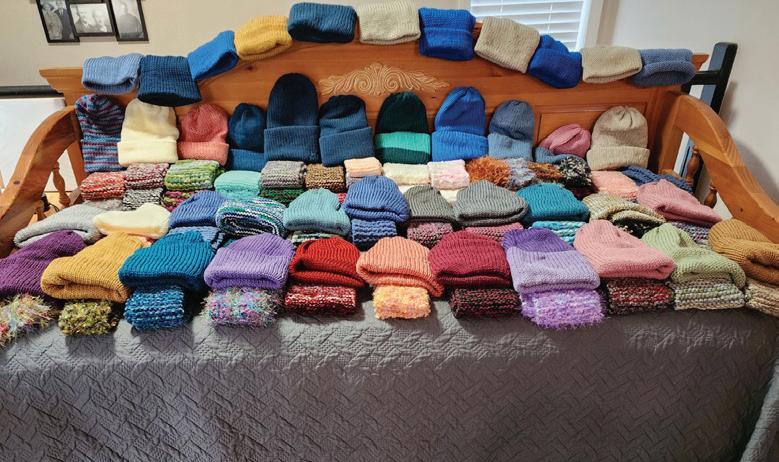
A recent note from reader Abigail Cowart brought me great joy. She thanks everyone who donated yarn to her project of making hats and scarves for the homeless. She’s made and distributed 100 hats and scarves so far. Want to find ways you can help fellow readers? Learn more on Page 18.

For supplemental and interactive content, search @Ruralite on your favorite social media sites.
Storytelling has always been more than just words on a page to me. It is an art, a powerful way of connecting across space and time. A wellcrafted story can shift perspectives, stir empathy and ignite dialogue that lingers long after the page is turned. Over the years, I have come to see how stories provide comfort, provoke thought, and, most importantly, help us understand ourselves and the world around us. I am committed to preserving that legacy.
I want to foster a space where storytelling continues to thrive and where writers are encouraged to take risks, dig deep and capture the essence of our communities and the stories they hold.
At the same time, beginning this role signifies a new beginning, a chance to explore fresh
directions and uncharted themes. I look forward to bringing my voice and vision to this new chapter, working alongside our talented team to keep the magazine relevant, thought-provoking and vibrant. Together, we will honor the past while pushing forward, blending tradition with innovation to craft stories that inspire and resonate for years to come.
What about you? Do you have ideas for stories we haven’t yet told? I’d love to learn more. Reach me at editor@pioneer.coop. Here’s to new beginnings, rich storytelling and the road ahead.
Chasity Anderson Editorial Director
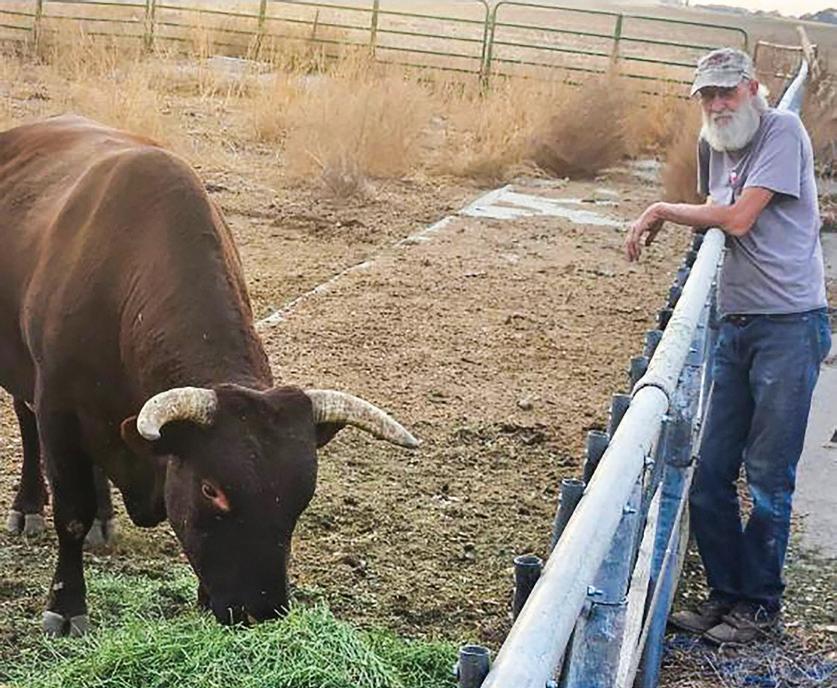
Breeding program preserves heritage livestock Up Close, Page 10
Cooperative Family Fund helps children after tragic loss Spotlight, Page 12
The Kitchen, Page 16
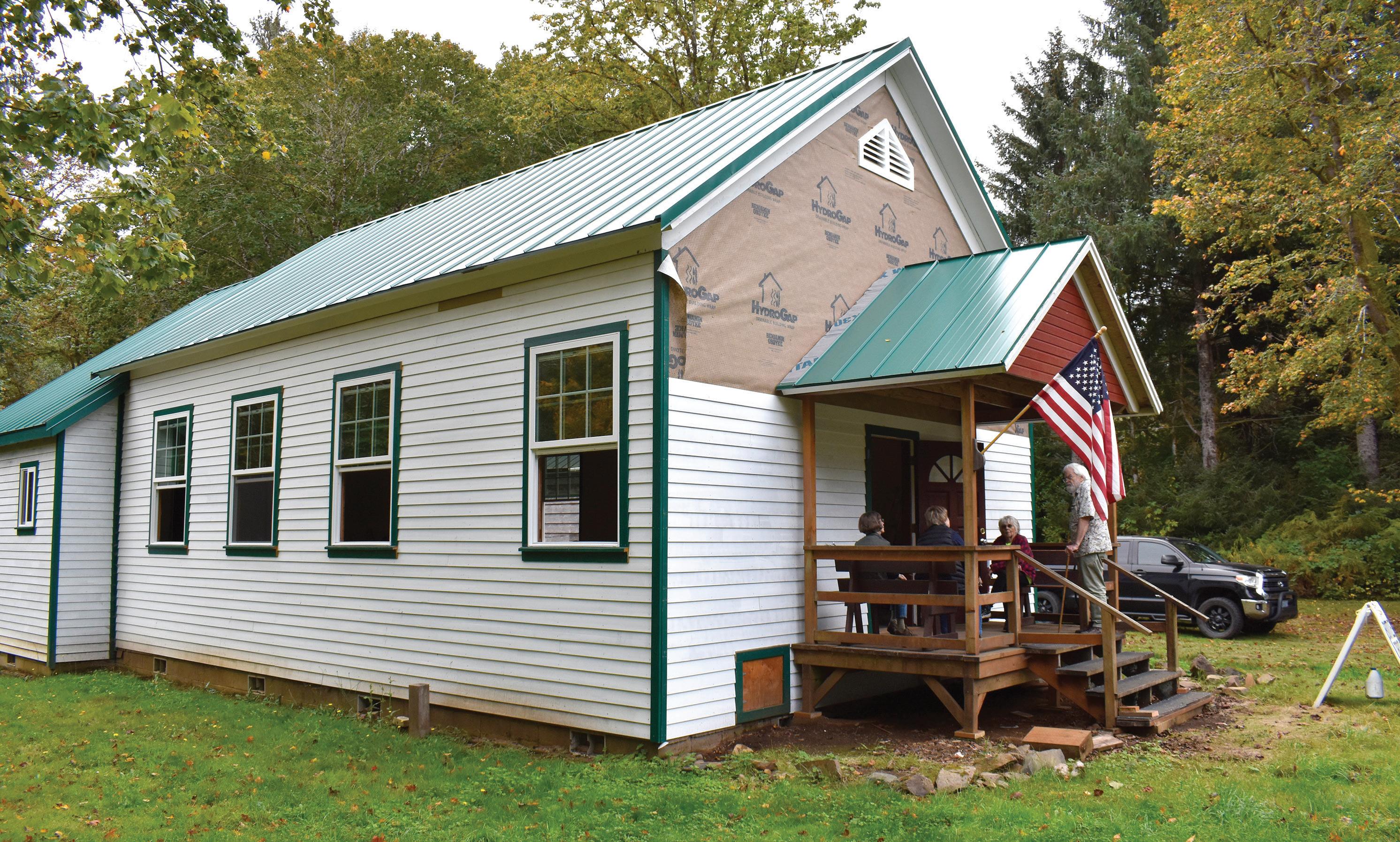
A group of dedicated volunteers is working hard to renovate the old Necanicum Schoolhouse
By Scott Laird
Way out in the far-western reaches of West Oregon Electric Cooperative territory, a project driven by a group of tireless volunteers is taking shape. One thing most locals know by now is to never doubt the determination of rural Oregonians when they set their sights on a goal—especially when those rural Oregonians are involved in their local fire district.
The goal in this case is to restore the Necanicum Schoolhouse. The project is organized by Friends of the Hamlet Rural Fire Protection District.
Rural fire districts are often the heart of their local communities. They are places people come together to volunteer and protect one another, but they often also serve as community centers—gathering places for seasonal events, classes and educational
activities, entertainment and meals.
That’s what the Hamlet Friends and Necanicum Schoolhouse restoration project is all about.
“This used to be a very active community center, but the building has deteriorated,” says John Benson, a retired firefighter and former board member with the Hamlet RFPD. “We want to get that reactivated.”
John serves as the construction manager of the renovation project.
“The thing is, people are pretty broadly spread out here, and there isn’t a good way to meet people and get acquainted,” he says.
The old schoolhouse, built in 1930 by local loggers and farmers, is near milepost 8 on Highway 26. The building has a rich history and served as a schoolhouse until the mid-1940s. A poorly constructed kitchen and restrooms were added to the
back of the building in 1949.
The building served various community purposes for many years, including as a garden club, grange hall, polling place for elections and a square dance hall. A fire station—mainly a garage to park trucks—was built on the same lot, before the property was given to the Hamlet Fire District in 1991.
The Fire District built a new foundation under the building in 1992. The fire station, still with limited facilities, was rebuilt in 1996.
Unfortunately, maintaining the building became too much for the tiny Hamlet Fire District, which covers 18 square miles and has a population of 450. The district provides fire protection and critical emergency medical services for the region, and the building has fallen into disrepair.
In 2021, Friends of Hamlet RFPD, a
501(c)(3) nonprofit, was formed. A schoolhouse renovation committee was established to manage the restoration of the schoolhouse and create an asset the Fire District volunteers and the community can use.
The fire station has no bathroom or laundry facilities, and there is no place within district boundaries to hold an ADA-accessible public meeting. With Highway 26 as a major route to the coast, the RFPD could play an important role assisting tourists in the event of a major emergency event. The school house renovation is designed to meet these and other community needs.
“Right after COVID-19, we had a firefighter appreciation event—a hot dog feed—and it was really nice to have everyone here and meet people,” says Pat Jordan, the secretary for the Friends group and a WOEC Board member. “We couldn’t use the schoolhouse building, so we were all outside. But we thought if we did something with the schoolhouse, then we could do this more often and bring together more of the community.”
Family reunions, a square dance or weddings held at the schoolhouse could provide a way to “really get to know our neighbors and build the community again,” Pat says.
The project is making progress with limited resources. Through fundraisers, grants, financial donations—including two grants from former state Sen. Betsy Johnson’s family foundation—donations of building materials and the sweat of volunteer labor, the project has:
• A new septic system.
• A new kitchen and bathrooms with a newly constructed addition to the back of the building.
• A newly straightened structure, correcting a 5-inch lean.
• A new roof, windows and new doors, and new exterior siding.
“We just started piecing things together with money from here or there,” John says. “We’re amazed at some of the donations that came out of the woodwork.”
In mid-October, volunteers replaced the rest of the siding and built an ADAcompliant ramp and deck, with plans to
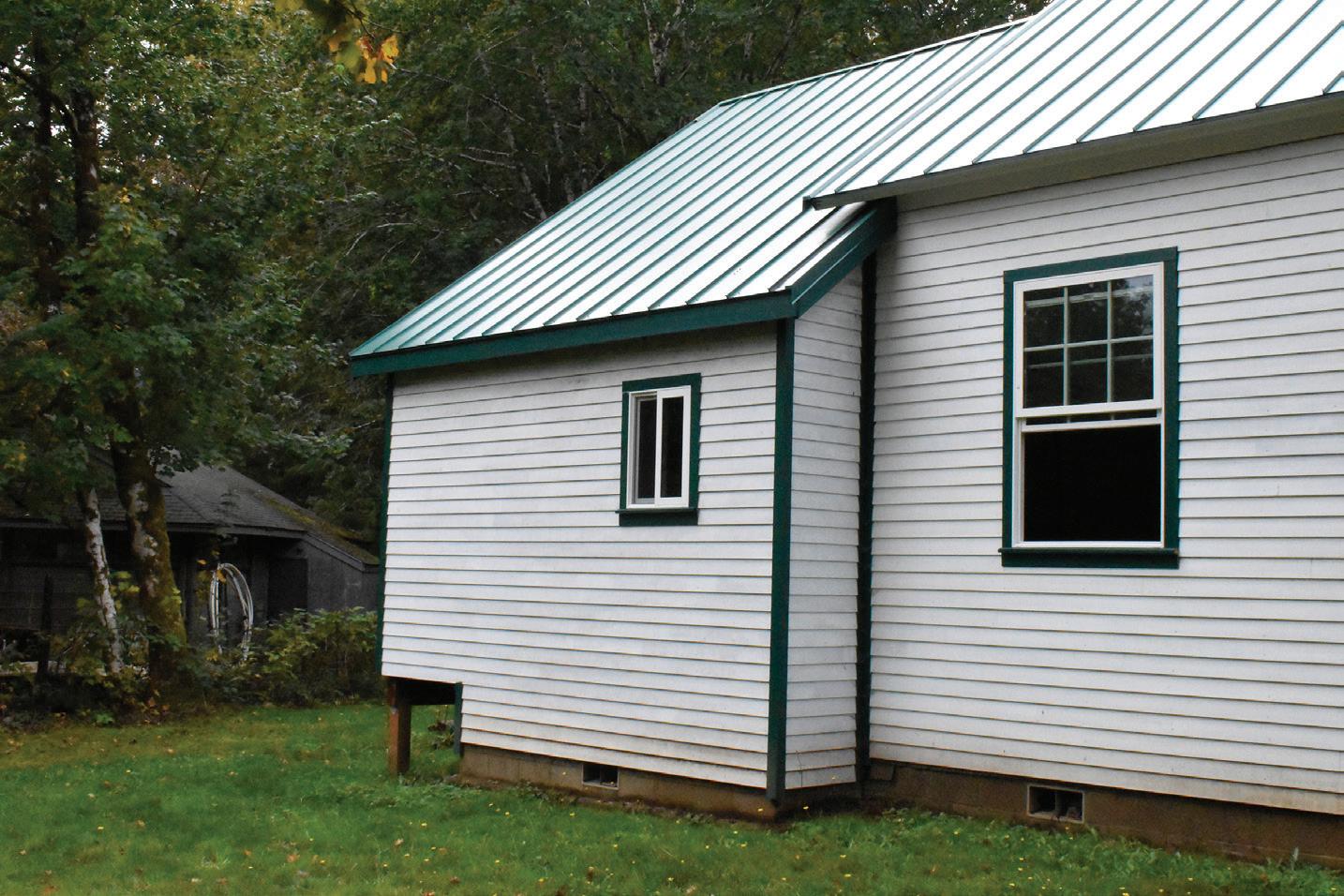
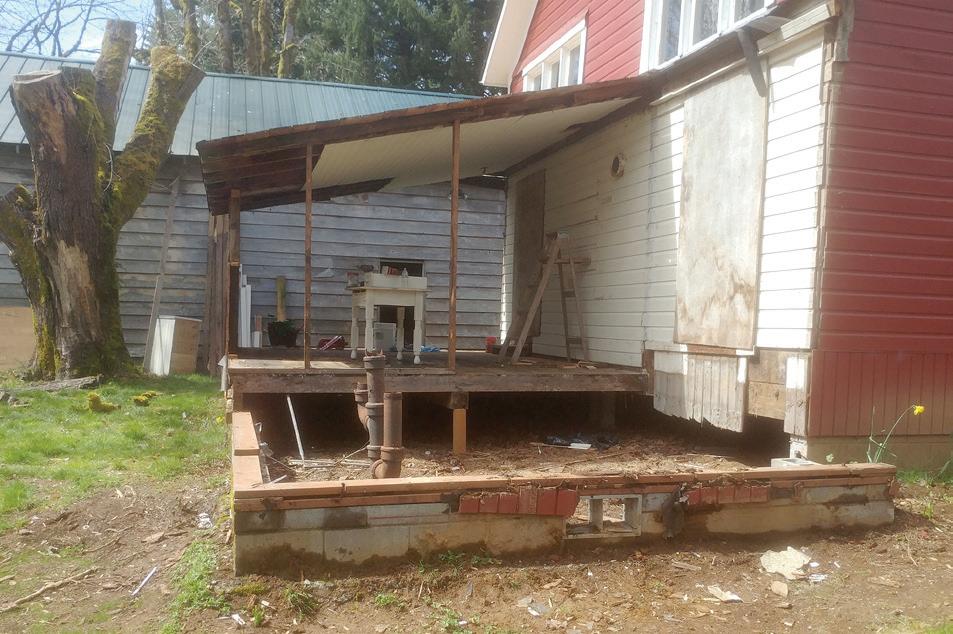
have the outside of the building complete heading into the winter. Getting working electricity, heating and plumbing, finishing the interior of the building— including the bathrooms and kitchen—and refinishing the old hard floors were still on the to-do list. Fundraising is still needed.
One consistent fundraiser is a can and bottle drive. Every Saturday from 11 a.m. to 3 p.m., the Friends are at the building accepting donations. Based on their figures, they believe they have handled more than 100,000 cans and bottles.
The project to breathe new life into the old building seems like destiny. It has also taken a lot of hard work and determination.
“It’s just been amazing how when we get to a certain point in our construction where we need something—to the point where we’re getting borderline desperate—we’ve found it,” says Karen Hurd, Friends president and member of the RFPD Board of Directors. “It’s been sort of semimiraculous. We were right at the point where we needed to put the new roofing on, and I’ll be doggoned if some fellow in the neighborhood made a deal with a local roofer, and he sent
his crew out and put the roofing on.”
The group is getting close enough to completing the project that members have allowed themselves to dream of all kinds of uses for the renovated schoolhouse—weddings, funerals and family reunions; as an emergency resource and meeting place during natural disasters; entertainment such as movie nights, musical performances, and maybe even a square dance again. Pat says her husband is a square dance caller, so they are all set.
Karen is confident in the project’s success.
“My husband went to school here, and his family held Christmas parties here for many, many years,” she says. “It was a family tradition. The Hurd family has booked the schoolhouse for Christmas of 2025 for our Christmas dinner.” n
For more information on the Necanicum Schoolhouse renovation project or to make a donation, contact Pat Jordan at 405-206-8718 or Patricia.Jordan@OKState.edu.

By Scott Flood
Santa isn’t the only one who makes an appearance this month. As the year nears its end, retailers start trumpeting deep discounts on home appliances. That’s great if you’ve considered replacing some of your home’s tired appliances with one of today’s smart models. But before buying a smart appliance, take some time to learn what they offer—and think about what you really need.
Begin with an honest look at how you live, and consider the role your current appliances play in your daily routine. Would the capabilities of a smart appliance make your life easier? For example, if you frequently forget to start the laundry or your dishwasher, Wi-Fi-enabled appliances with remote start capabilities may save you time and trouble.
If you’re thinking about stepping up to a smart appliance because it has a cool feature you might use once a year, ask yourself if it’s worth the extra cost.
Next, think about any smart devices you already use in your home. Make sure they’re compatible with the smart appliance’s operating system, so you can get all the benefits you expect. For example, many of these appliances are engineered to work with familiar voice assistants, such as Amazon Alexa, Google Assistant or Apple’s Siri. Incompatible systems might limit your ability to use the features most important to you.
Is your home’s infrastructure ready to handle the demands of a smart appliance? Depending on the model you choose, it might require anything from a basic internet connection to a home Wi-Fi network to provide the operation you expect.
Some smart appliances may require Bluetooth, Zigbee, Z-Wave or other systems for connectivity. Others can receive software updates via Wi-Fi. Having


access to the right technology ensures your system functions correctly and can handle updates as they become available.
It’s always important to consider energy efficiency when buying a new appliance. Most smart appliances are designed to reduce energy consumption, with operating modes that deliver the performance you want while making more efficient use of energy.
Smart appliances that are Energy Starcertified meet or exceed federal energyefficiency standards, and some may use only half as much energy as standard appliances. Many let you schedule operations during times of the day when energy rates are lower. That’s particularly beneficial with high-energy appliances, including washing machines, dishwashers and clothes dryers.
Repairs to smart appliances can be expensive, so be sure to consider

the warranty. Generous manufacturer warranties demonstrate the company’s confidence in the quality of its products.
Finally, because most smart appliances are connected to the internet, make sure you think about privacy and security. Research the manufacturer’s privacy policies and security features to ensure data —like your voice commands and shopping habits—don’t fall into the wrong hands. Making sure the manufacturer takes your privacy and online safety as seriously as you do is a smart strategy.
For most homeowners, the biggest downside to smart appliances is they carry higher price tags than their not-so-smart counterparts. However, price is just one factor in the cost of any appliance. When you also consider the long-term value smart appliances deliver—whether that’s in energy savings, helpful conveniences or improved reliability—most save you money over their service life.
Smart appliances may be eligible for rebates and tax incentives, so ask your retailer what’s available.
What’s ahead for smart appliances in the foreseeable future? The marketplace is starting to see the integration of basic artificial intelligence capabilities that can make smart appliances provide better service, greater reliability and lower energy needs. As these AI-fueled systems become more common, your refrigerator might know your habits so well it can generate a shopping list for you. Your dishwasher could adjust its operating cycle to better clean your family’s uniquely dirty dishes.
There was a time when appliances changed little from decade to decade. Today, products advance more quickly than ever before, and we can expect to see more big changes ahead. n

BY
By Jennah Denney
As the days grow colder, you may be considering ways to stay cozy while also managing home energy use. One of the best ways to make your home more energy efficient is by choosing products with the Energy Star label. But what exactly does the label mean, and how can it benefit you?

Energy Star is a program by the U.S. Department of Energy and the Environmental Protection Agency to help consumers identify energyefficient products that save money and reduce environmental impact.
Products that earn the Energy Star label must meet strict guidelines for energy efficiency, performance and cost effectiveness. Here’s how the process works:
The product must be more energy efficient than typical models. This helps you save on energy bills by using less electricity while still providing the same performance.
The product must be tested in EPA-recognized labs following standardized procedures. These tests ensure the product meets all energyefficiency and performance requirements.
Once tested, the product’s data is reviewed by a third-party certification body to verify it meets the set standards. This ensures only the best products receive the Energy Star label.
Even after a product is certified, the EPA conducts off-the-shelf testing on random samples of Energy Star products to ensure they continue to meet the required standards. If a product fails to meet the performance requirements during verification testing, it can be disqualified from the Energy Star program. The EPA has clear procedures for handling such disqualifications to maintain the integrity of the label.
Whether you’re upgrading your refrigerator, replacing lightbulbs or buying new electronics, the blue Energy Star label is your assurance the product has passed all energy-efficiency tests. It’s easy to spot and can be found on products ranging from small and major appliances to electronics.
Many large appliances, such as washing machines and clothes dryers, include a yellow Energy Guide label that provides estimated energy use. Comparing these labels can help you determine how much you can save with an Energy Star model compared to a standard model.
While Energy Star products can cost a little more upfront, their energy savings over time often cover the difference. They help reduce your household energy consumption, which could translate to lower utility bills.
As you shop for appliances, electronics or other home equipment this holiday season, look for the Energy Star label. Whether it’s a new washing machine or energy-efficient lighting options, these products are a simple and effective way to save money and lower energy use. Check with your electric utility about rebates or incentives for buying Energy Star products.
To browse products that have earned the Energy Star® label, visit www.energystar.gov.

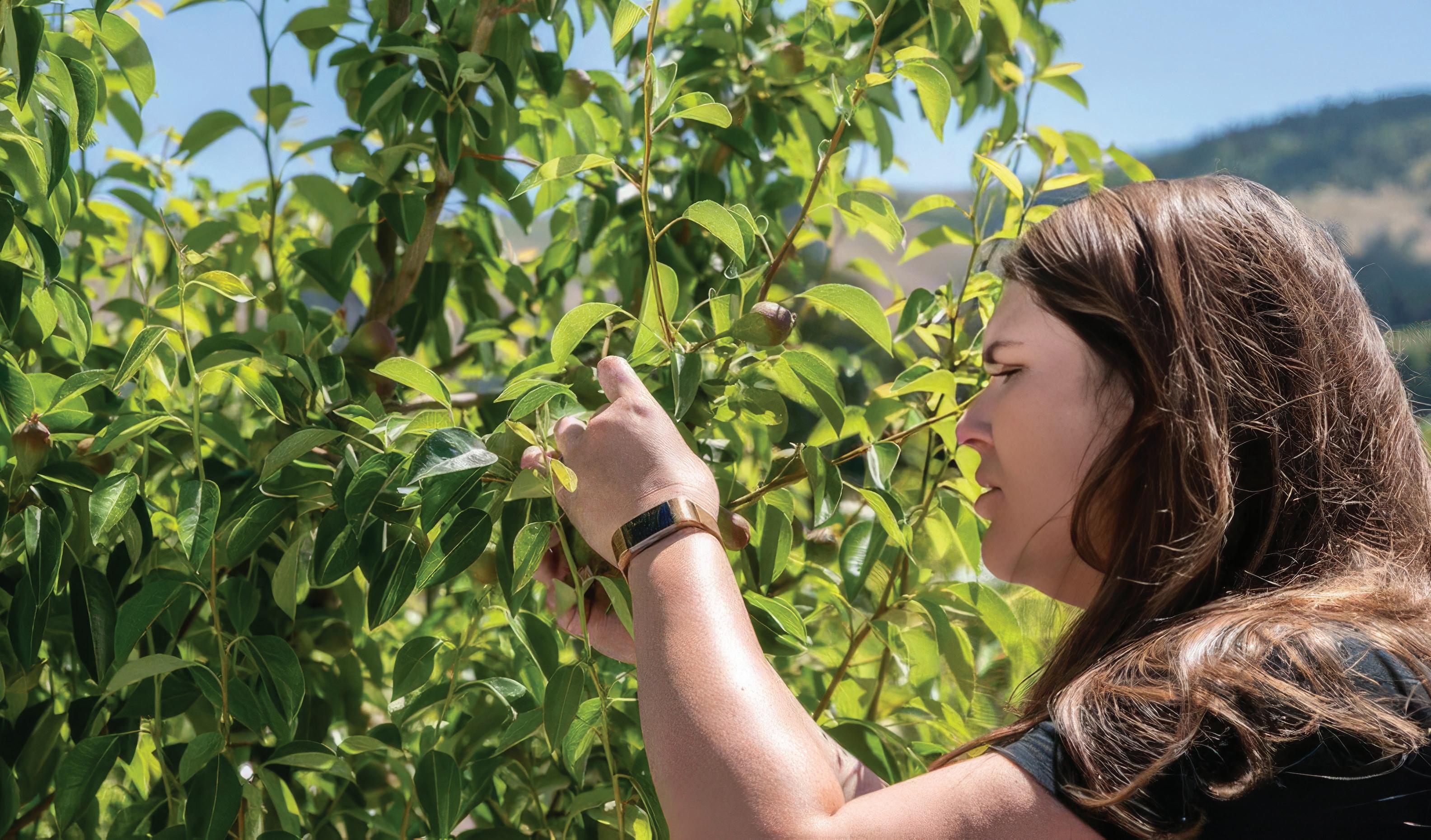
Just when you’re set for a long winter’s nap, it’s time to tend your fruit trees. If you don’t, chances are they’ll struggle in the coming season. Give them attention now to help ward off insects and diseases, says Ashley Thompson, an Oregon State University Extension Service fruit tree specialist.
“You want to use products that have low toxicity and won’t cause a lot of problems for the environment,” she says. “Dormant sprays score pretty well.”
Applying dormant sprays—horticultural oil, copper and sulfur—helps control nasty pests and diseases, such as codling moths and apple scab.
Superior oil, also called horticultural oil, is a highly refined miscible oil—up to 99.9% pure. When mixed with water and sprayed on trees, it smothers overwintering insects and their eggs. It targets mites, aphids, leaf hoppers, mealy bugs, leaf miners and more.
Sulfur is a fungicide that controls fungal diseases, such as apple and pear scab and peach leaf curl.
Copper is a fungicide and bactericide that controls such diseases as bacterial
blight, fire blight and Nectria canker. It kills bacteria and fungal spores left in the trees, including Pseudomonas syringae, a common bacteria that can cause gummosis, the oozing of bacterial-infested honeylike sap from split bark. In a rotation of copper and sulfur, the copper deals with bacteria. Sulfur targets fungal diseases best.
With a spray regimen of all three— used in conjunction with good hygiene and pruning practices—most fruit tree problems can be nipped in the bud.
The trio of pesticides, which can be used in organic gardens, fits into the realm of integrated pest management, a practice that uses a variety of low-risk tools to deal with pest problems and minimize risks to humans, animals and the environment.
Ashley says dormant sprays are an important part of good integrated pest management.
“Their toxicity level for animals is pretty low if you follow the labels,” she says. “Horticultural oil kills target insects, but beneficial insects are rarely around trees in the dormant season.” n
courtesy of Oregon State University Extension Service.
X Read the labels of all products you use, and follow the instructions. When used incorrectly, pesticides are harmful to you and the environment, and can damage the very plants you’re trying to help.
X Apply horticultural oil during the dormant season to allow for greater coverage and a higher likelihood of getting to most insects.
X Spray when temperatures are above freezing but before buds break.
X Prune trees to keep the branches separated for good pesticide coverage and good hygiene.
X Clean up fruit, leaves, weeds and debris under trees where insects can overwinter. If you don’t want to rake leaves, mow over them a few times and leave them to decompose.
X Prune diseased wood from your trees.
X Add organic matter around trees for fertility. Enhanced microbial populations in the soil help devour the remnants of orchard sprays that fall to the ground. Don’t spread mulch too close to tree trunks.
Visit tinyurl.com/manageorchards for more information on disease and pest control. For more information on fruit trees, visit tinyurl.com/growtreefruits and tinyurl.com/trainorchard.















































By Les O’Dell
Denise Hanna’s herd of cattle looks different from others seen near her Etna, California, ranch. That’s because they are different. That distinction is what first attracted her to belted Galloway cattle, and that’s why they draw so much attention.
Belted Galloways—informally known as “belties”—are best known for their appearance: usually black (although sometimes red or roan) with a wide, white belt running vertically between the shoulder and hind legs, leading some to refer to the breed as “Oreo cows.” Looks aside, the breed is known for its efficiency on rough forage, being good mothers and producing high-quality beef.
The cows are among a wide variety of heirloom breeds of agricultural livestock— animals once common across the United States but now considered endangered.
Known as heritage breeds, they are a throwback to a time before industrial agriculture became a mainstream practice.
According to The Livestock Conservancy, a North Carolina-based not-for-profit organization working to promote and protect these animals, heirlooms are breeds that were carefully selected and bred over time to develop traits that made them welladapted to the local environment. The breeds thrived under farming practices and cultural conditions that are very different
from some found in modern agriculture. Because of unique characteristics such as slower rates of weight gain, these breeds fell out of favor with commercial producers, pushing some of the old breeds to the brink of extinction.
Today, The Livestock Conservancy lists more than 180 agricultural breeds across 11 species—ranging from rabbits, ducks and geese to cattle, horses and pigs—on its Conservation Priority List, an annual report ranking the danger of disappearance of each breed. The classifications are critical, threatened, watch, recovery and study. Based on these rankings, conservationists work to preserve these breeds.
Denise shares the organization’s mission when she speaks to those who ask about her Belted Galloways.
“I talk about how they are a heritage breed, and there are not as many of them,” she says, explaining the uniqueness of the breed and quality of the beef she sells online. “I’ve been very pleased with the taste of the beef. I find that they don’t need as much marbling to be tender and taste great.”
Across the country, more than 4,000 volunteer breeders and 150-plus breed associations work to ensure endangered breeds like belted Galloways—ranked under the “watch” category on the conservation list—don’t disappear. Homesteaders and farmers choose heritage breeds for a variety of reasons. Some,

including Rex Studyvin of Jerome, Idaho, are attracted to the uncommon breeds.
Rex’s farm includes milking Devon cattle (listed as critical), Jacob-American sheep (threatened) and mule-foot hogs (critical). He says many of the characteristics of heritage breed animals— such as resistance to some parasites and diseases or ability to pasture in less-thanideal settings—may prove to be valuable over the long term.
“They have genetics that we don’t want to lose because if those genetics are gone and we need them, we will have problems,” he says.
Denise Frye of Addy, Washington, calls it “maintaining genetic diversity for the future.” She got into raising a variety of chickens, turkeys, ducks and geese through an interest in permaculture.
“Permaculture is basically a lifestyle that incorporates sustainability into all of its principles, and heritage livestock certainly fills the bill in that regard,” Denise says.
Denise has been recognized for her work in conservation breeding of the cotton patch goose, which moved from critical to threatened on the 2023 list. She established the Cotton Patch Goose Society to further promote and protect the breed a dozen years ago.
The protection of biodiversity and genetic resources are other important reasons for protecting these breeds, says Alison Martin, program director for The Livestock Conservancy. Many producers
choose heritage animals because they want to make a difference.
“None of us has a crystal ball to see what the future of agriculture is going to look like. This is about keeping these breeds around as a genetic reservoir,” she says, adding these animals are key to food security. “If we didn’t have this diversity, eventually, we would narrow our food system down to where it wasn’t sustainable. There would be no backup.”
That’s not lost on Denise.
“I do honestly, 100% believe that the cotton patch goose would have gone extinct if not for some of this work,” she says.
Efforts seem to be paying off. Since first establishing the Conservation Priority List 37 years ago, The Livestock Conservancy has yet to lose a breed to extinction. In fact, in the last dozen years, 12 breeds have graduated from the list, meaning those animal populations no longer need continual monitoring.
In 2024, two breeds—Southdown sheep and Hereford pigs— graduated from the list, and 15 breeds were reclassified within the list’s four tiers, most in a positive direction.
For farmers, educators and conservationists, the work of raising and promoting heritage breeds and their products is a labor of love. n
More information about these animals and the Conservation Priority List can be found at www. livestockconservancy.org.

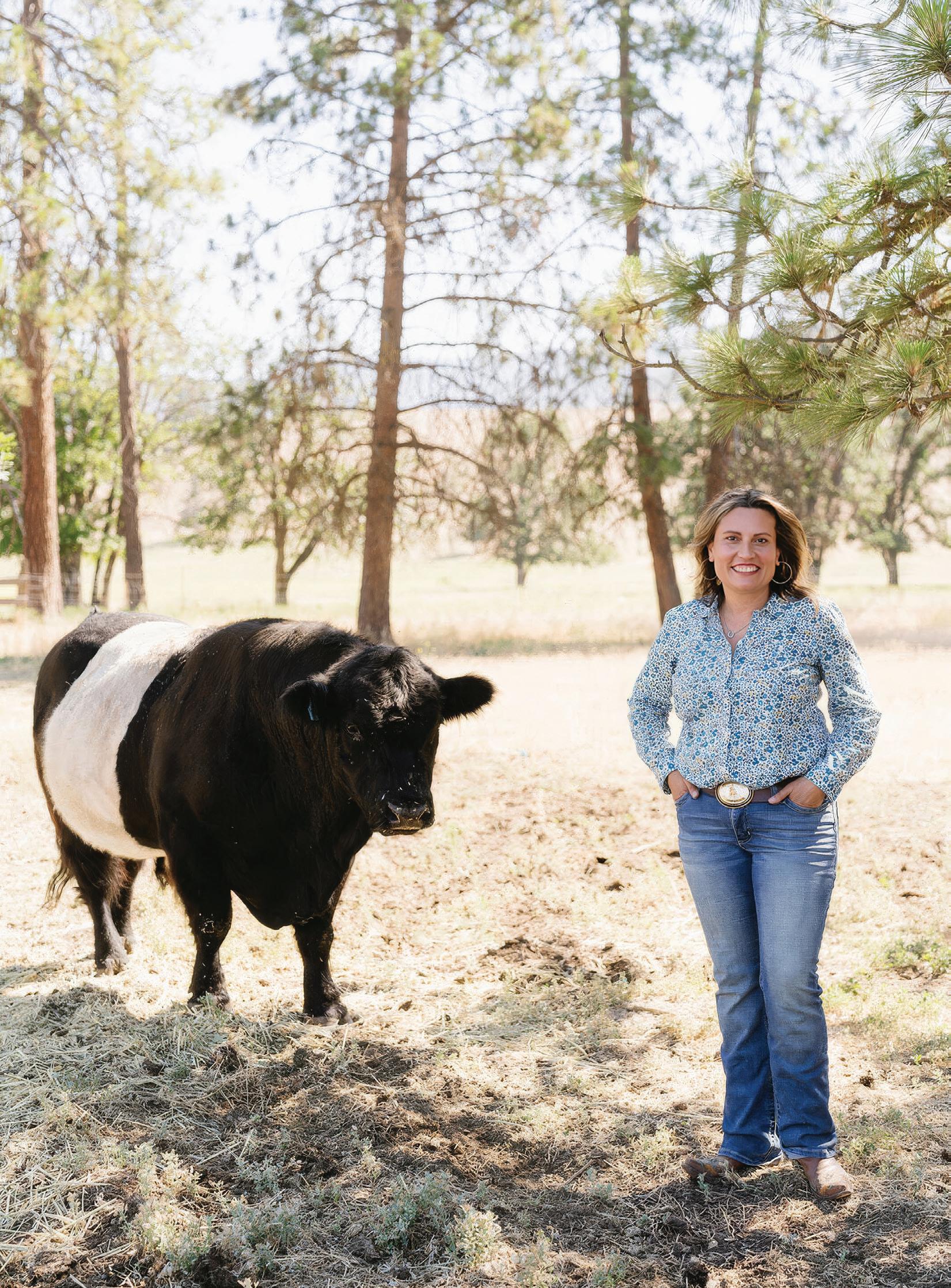


By Drew Woolley
Trent and Betsey Smith never actually danced together at the country two-step event where they met. But he saw her from across the room and decided to strike up a conversation once the music faded.
“He came up to me after the dance, and we talked,” Betsey says. “We ended up dating but never actually danced with each other until after we were engaged.”
The two were married just five months later and had five kids over the course of their 28-year marriage. Then, on Feb. 6, 2023, just more than a month into a new job as a delivery driver with Fall River Propane—a subsidiary of Fall River Rural Electric Cooperative, in Ashton, Idaho—Trent died on the job from a medical emergency. He was 51.
Several months later, Fall River reached out to Betsey about a new program called Cooperative Family Fund, which provides financial support for children 17 and younger of cooperative employees who have died. While the program had only been in place for a few months, Betsey’s youngest son, Coleman, was eligible for a $10,000 trust.
Fall River has carried on Trent’s legacy by helping Betsey and Coleman with one of his favorite traditions: raising 50

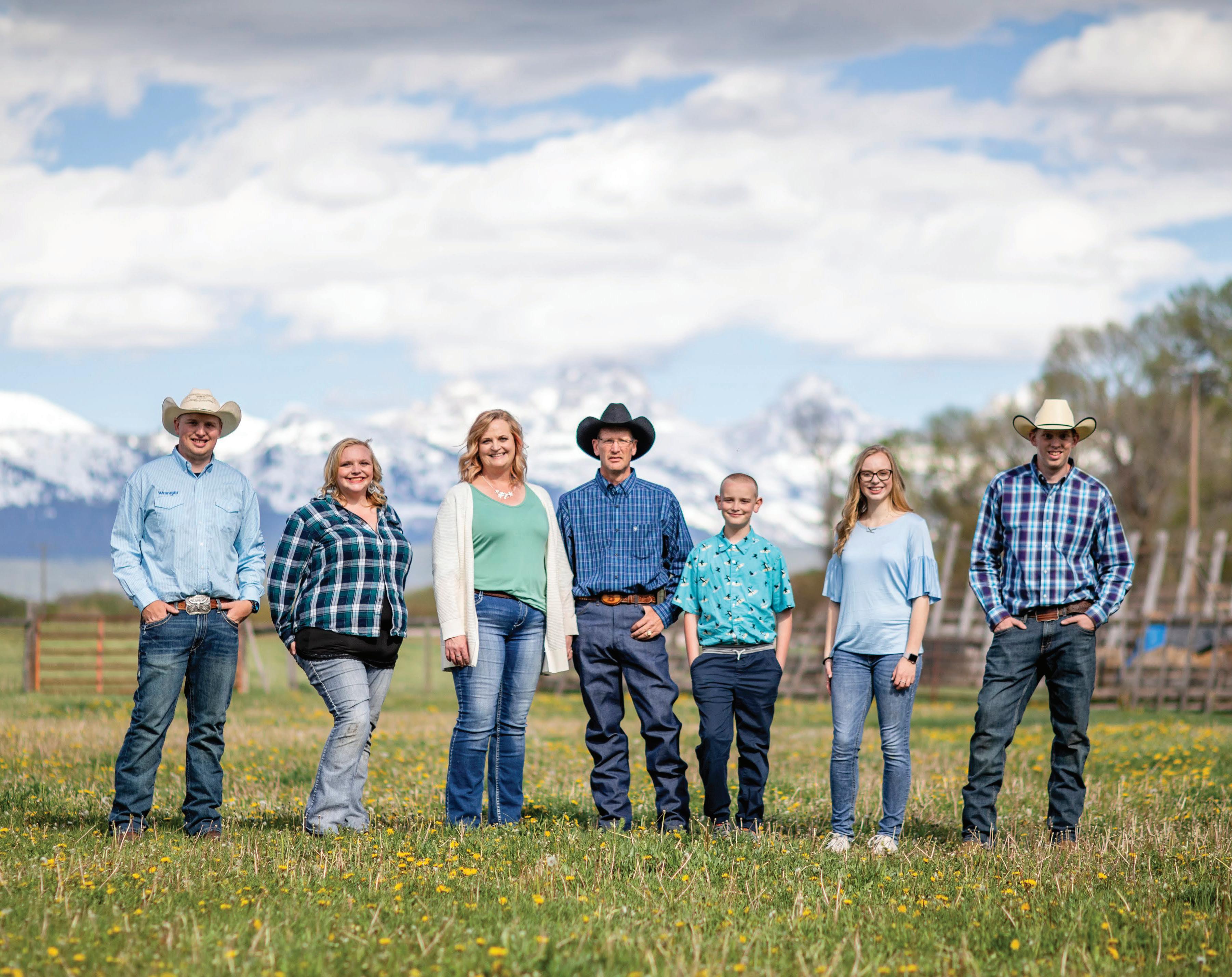
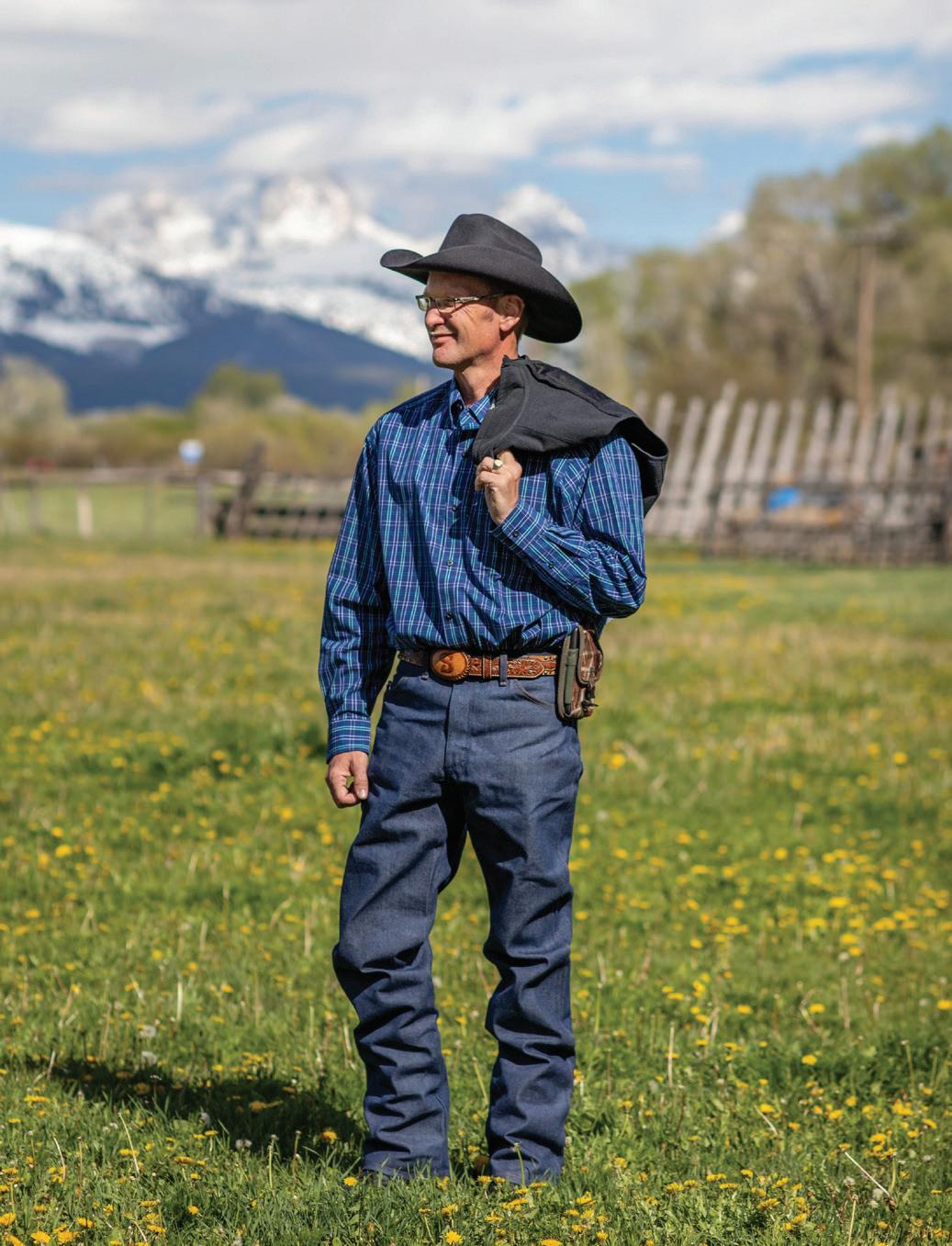
American flags along the side of the road each Memorial Day and Independence Day. With the cooperative’s help, they plan to keep Trent’s flags flying for years to come.
“I feel like I’m very blessed that he worked for them,” Betsey
says. “They didn’t have to be as good to us as they were, considering he had worked there for barely 30 days. The fact that they would put my son into this fund, that they would be willing to do that for him, meant a great deal to me.”
For Cooperative Family Fund Board President Tony Anderson, providing support for each member of the cooperative family—no matter how long they have been part of it—is what Cooperative Family Fund is all about. The idea for the fund first came to Tony after a series of funerals for lineworkers across the country. He realized cooperative support often ends after the funerals.
“We’re really good at funerals in our business, but we don’t
If we care about our employees while they’re here at work, I don’t think that care evaporates when there is an untimely death.
— Bryan Case, Fall River Rural Electric Cooperative General Manager
do anything after,” he says. “We always talk about being a family in the co-op world, and I believe we’ve proven that over the years. But I felt this would make us a stronger family. And member services, engineers, accountants, managers—we’re all part of that family.”
Tony discussed the idea with other cooperative leaders and proposed it to the National Rural Utilities Cooperative Finance Corp. in January 2022. While there are no statistics on how many electric co-op employees are lost annually, the goal is to

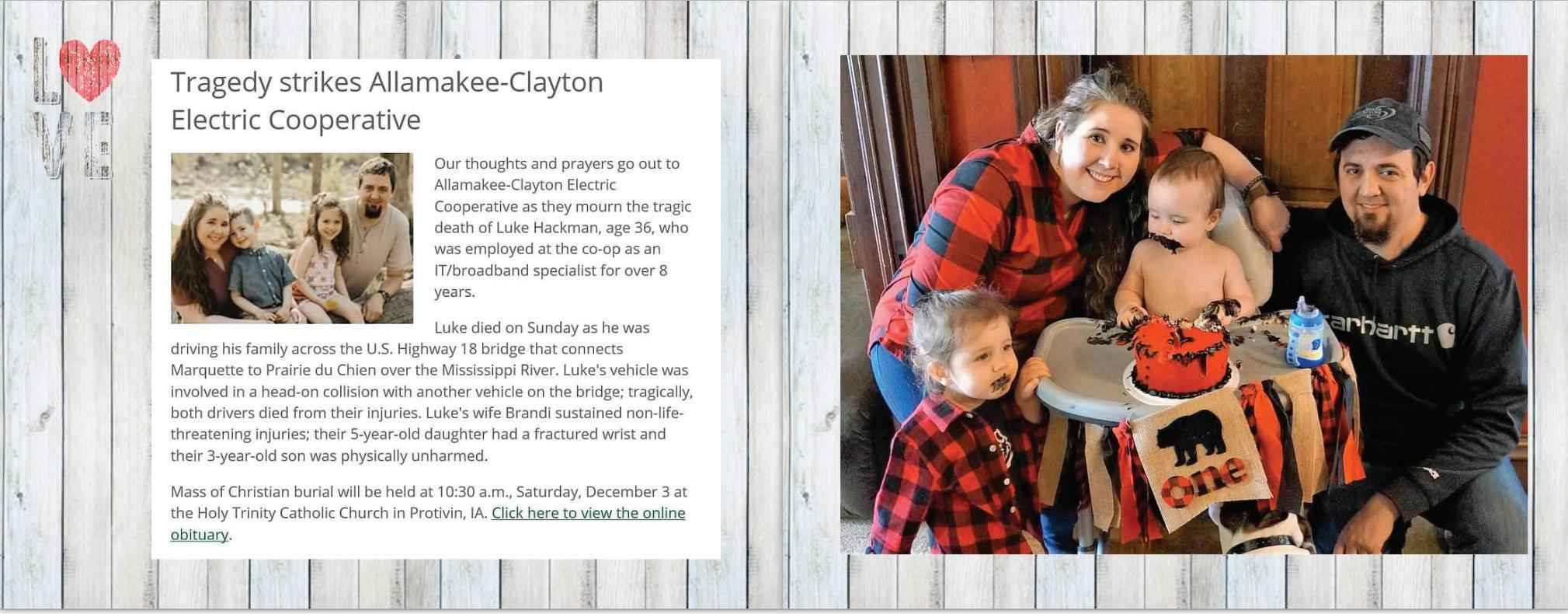
ABOVE and OPPOSITE PAGE: Pages from a memory book created for Luke Hackman’s family after he died in 2022.
continually raise funds so any child younger than 18 who loses a parent employed by an electric co-op would receive a $10,000 trust. That trust accrues interest until the first day of the month after the child’s 18th birthday. At that point, recipients can put the money toward whatever they choose.
“Every child is going to take a different path or has different needs,” says Anne Harvey, one of the CFF founding board members. “If college education is something for them, rather than saying this is for books, maybe they need help with housing. The skilled trades are so needed at distribution co-ops, so maybe they want to go that route, or this could give them a gap year. Each child is going to have a different need, and we just can’t wait to see how they use the fund.”
In addition to encouraging cooperative staff to remain engaged with each family, Cooperative Family Fund also helps the cooperative put together a memory book of its time with the employee to give to family members. The books are an important inclusion for Tony, who was 2 when his father died. Tony has only a single photo of the two of them together.
“I have very few stories of him, less than five probably,” he says. “The memory book was important to me because I knew the kids would appreciate it over time. When you lose somebody, the biggest thing you’re worried about is people forgetting them. And when you give that family a memory book, they feel like their loved one is not forgotten because the memories are captured in that book.”
For cooperatives mourning the loss of one of their own, offering meaningful support to families has been just as important as the money. Hollee McCormick, general manager of AllamakeeClayton Electric Cooperative based in Postville, Iowa, recalls her team putting together a memory book for Luke Hackman. A member of the co-op’s broadband department, Luke died in a car accident the same month the Cooperative Family Fund
was announced. His two children were the first to receive trusts through the program.
“We were all grieving the loss of Luke, and putting that book together kind of had a healing effect for all of us,” Hollee says. “I always tell Tony there was so little we could do for that family. Being able to talk to his wife and tell her that the nation of co-ops had put this program together and we would be able to help a little bit more was meaningful.”
Brad Janorschke, general manager of Homer Electric Association based in Homer, Alaska, was supportive of Cooperative Family Fund when it officially launched in December 2022. What he did not expect was that his utility would need to make use of the fund just days later, when lineworker Sam Clyde was killed in a car accident, leaving behind five children.
“He was pretty much loved by everybody,” Brad says. “His picture is still in the hallway out of the office he worked at. His dad was a retired lineman for our utility, as well. It was fantastic that the fund was there. It really helped out the family, and now the cooperative contributes to it annually.”
While many participating co-ops donate through the board or give employees the chance to contribute from their paychecks, others have found ways to involve their communities. Flathead Electric Cooperative in Kalispell, Montana, held a cookie bake-off contest, and Beltrami Electric Cooperative in Bemidji, Minnesota, had a rummage sale. Proceeds from both events went to the fund.
The fund has raised $1.2 million in its first two years and provided 78 trusts for the children of 37 employees across 20 states. Those numbers serve as a reminder of just how much the fund was needed, even to early supporters like Fall River Rural Electric Cooperative General Manager Bryan Case.
Oftentimes, co-ops are conscientious of the dangers of the job, Bryan says.

“But I don’t think we really understood the magnitude of workers who die for other reasons,” he says. “Maybe it’s cancer or a car wreck, and they leave children behind who are starting high school or elementary school. The need for that support is greater than I ever envisioned or anticipated.”
Cooperative Family Fund is looking for more ways to get co-op volunteers involved as the program grows. That might be enlisting more help putting together memory books or simply building a better network to alert fund leaders to families eligible for support.
“If we care about our employees while they’re here at work, I don’t think that care evaporates when there is an untimely death,” Bryan says. “This fund gives those underage children a little bit of a boost to get them on that next step, especially when there’s just one person at home now taking care of the whole family.”
That boost has been keenly felt by the Smith family, for whom money was tight even before Trent’s death. Whatever challenges they may face, it gives Betsey peace of mind to know Coleman will have a special gift from the cooperative family waiting for him on his 18th birthday.
“We didn’t really have college funds for our kids,” she says. “With five kids, we were just trying to keep the lights on most of the time. Setting aside extra money for things like that just didn’t happen. It’s very special and important to us that they’ve done that for us.” n



Spiced Gingerbread Loaf With Orange Icing
2 cups all-purpose flour
1 teaspoon baking soda
11/2 teaspoons ground ginger
11/2 teaspoons ground cinnamon
1/4 teaspoon ground cloves
1/4 teaspoon salt
1/8 teaspoon fresh ground pepper
2/3 cup dark molasses

Recipes by Gertrude Treadaway
3/4 cup hot water (about 100 F)
8 tablespoons unsalted butter, softened to room temperature
1/3 cup packed light brown sugar
1 extra-large egg, at room temperature
1 teaspoon pure vanilla extract
1 cup powdered sugar, sifted
2 to 3 tablespoons orange juice
Heat oven to 350 F. Grease a 9-by-5-inch loaf pan. Set aside.
In a medium bowl, whisk together the flour, baking soda, ginger, cinnamon, cloves, salt and pepper. Set aside. In a separate bowl or dish, whisk together the molasses and hot water.
In a large bowl, using a handheld or stand mixer fitted with a paddle attachment, beat the butter on high speed until smooth and creamy, about 1 minute. Add the brown sugar. Beat on high speed for 1 minute until creamed together fairly well.
On medium-high speed, beat in the egg and vanilla extract until combined. With the mixer on low speed, add the dry ingredients in three additions, alternating with the hot water/molasses and mixing each addition just until incorporated. Avoid overmixing. The batter will be thin. Whisk out any big lumps.
Pour batter into the prepared pan. Bake for 50 to 60 minutes or until the loaf is baked through. To test for doneness, insert a toothpick into the center of the loaf. If it comes out clean with only a few moist crumbs, it is done. Set the pan on a wire rack, allowing the bread to cool completely before removing it from the pan.
To make the icing, whisk together the powdered sugar and orange juice. Drizzle over the cooled loaf.
1 pound mild breakfast sausage
1 can crescent rolls
6 extra-large eggs, beaten
Heat oven to 350 F.
1 block cream cheese, cut into small cubes
2 cups shredded extra-sharp cheese
Spray a 9-by-13-inch baking dish with nonstick cooking spray. Brown sausage in skillet. Drain excess grease. Unroll crescent roll dough and press to cover the bottom of the baking dish. Top with sausage, then pour eggs over sausage. Spread cream cheese cubes evenly. Top with cheese. Bake for 30 minutes.
You can prepare the casserole the night before. Cover with plastic wrap. Refrigerate until ready to bake.
8 to 10 1/2-inch-thick slices
French or Italian bread
5 tablespoons unsalted butter, divided 2 large shallots, minced 10 ounces frozen chopped spinach, thawed and squeezed dry
1 teaspoon salt
Pepper, to taste
1/2 cup white wine
11/2 cups shredded Gruyère cheese
6 extra-large eggs
13/4 cups half-and-half
Heat oven to 225 F. Arrange bread in a single layer on a baking sheet. Bake until dry and crisp, about 40 minutes, flipping slices halfway through baking. When cooled, spread one side of slices with 2 tablespoons butter. Set aside.
Meanwhile, melt 2 tablespoons butter in a skillet over medium heat. Add shallots. Cook until softened and translucent, about 3 minutes. Add spinach, and season with salt and pepper. Cook, stirring occasionally, until spinach is warmed through, about 2 minutes. Transfer to a medium bowl. Set aside.
Add wine to the skillet. Increase heat to mediumhigh, and simmer until reduced to 1/4 cup, about 2 to 3 minutes. Set aside.
Grease an 8-inch square baking dish with the remaining butter. Arrange half of the bread slices, buttered side up, in a single layer in the dish. Sprinkle half of the spinach mixture and 1/2 cup Gruyère evenly over bread slices. Repeat layering with remaining bread slices, remaining spinach mixture and 1/2 cup Gruyère. Whisk eggs in a medium bowl until combined. Whisk in half-and-half, reduced wine and salt. Season with pepper. Pour mixture over bread layers. Wrap dish tightly in plastic wrap, pressing plastic flush to surface of strata. Weigh down strata with three 16-ounce cans to submerge ingredients. Refrigerate for at least 1 hour or up to 24 hours.
Heat oven to 325 F. Remove dish from refrigerator, and let it sit for 20 minutes. Remove weights and plastic. Sprinkle remaining cheese over top of strata. Bake until edges and center are barely puffed and edges have pulled away slightly from sides of dish, about 50 minutes. Cool on wire rack for 5 minutes before serving.
Paper muffin liners or cooking spray
1 cup packed light brown sugar, divided
4 teaspoons ground cinnamon, divided
1 cup whole milk
2 cups all-purpose flour
2 teaspoons baking powder
1/2 teaspoon kosher salt
1/4 teaspoon ground nutmeg
1/2 cup canola oil
2 extra-large eggs
1 teaspoon vanilla extract
Heat oven to 375 F. Line a standard 12-well muffin pan with paper liners, or coat the wells with cooking spray.
Place 1/4 packed cup of light brown sugar and 2 teaspoons of ground cinnamon in a small bowl. Stir to combine, breaking up any lumps.
Place flour, baking powder, the remaining 2 teaspoons ground cinnamon, salt and nutmeg in a large bowl. Whisk to combine.
Place milk, the remaining 3/4 packed cup light brown sugar, canola oil, eggs and vanilla extract in a medium bowl. Whisk until well combined and no lumps of sugar remain.
Pour the milk mixture into the flour mixture. Stir until just incorporated and no dry spots remain.
Divide half the batter among the muffin wells, about 2 tablespoons of batter per well. Sprinkle 1 teaspoon of the cinnamon sugar evenly over each muffin. Divide the remaining batter among the muffin wells. Sprinkle each muffin with the remaining cinnamon sugar, about 1 teaspoon per muffin.
Bake until the muffins are golden brown and a toothpick inserted into the center of a muffin comes out clean, about 18 minutes. Let cool for 5 minutes before removing the muffins from the pan.
Cooking spray
8 tablespoons salted butter
3 medium bananas, very ripe
1 cup granulated sugar
2 extra-large eggs
1/4 cup whole milk
2 teaspoons vanilla extract
2 cups all-purpose flour
1 teaspoon baking soda
1/2 teaspoon kosher salt
2/3 cup Nutella, divided
Heat oven to 350 F. Line a 9-by-5-inch loaf pan with parchment paper, so it hangs off two sides to form a sling. Coat the pan and parchment with cooking spray.
Place 8 tablespoons butter in a small microwave-safe bowl. Microwave on high power in 10-second increments until melted. Mash bananas in a large bowl with a fork or potato masher until smooth. Add the butter, sugar, eggs, milk and vanilla extract. Stir to combine.
Add flour, baking soda and salt. Stir with a rubber spatula until no dry spots remain.
Transfer half the batter to the prepared pan. Using a spoon, dollop 1/3 cup of Nutella onto the batter. Swirl Nutella into the batter with a table knife. Top with the remaining batter. Dollop the remaining 1/3 cup Nutella onto the batter. Swirl with a knife.
Bake until a toothpick inserted in the center comes out mostly clean with a few moist crumbs attached, 55 to 65 minutes. Let cool for 20 minutes in the pan, then flip the bread out of the pan onto a wire rack. Cool completely before slicing.
I am looking for “The Time of the End” by James Hayward. I am searching for copies anyone may have that they would be willing to send to me. I will pay postage and a small fee if necessary. Thank you in advance.
Donald Maddy 43 Mill Drive Wahkiacus, WA 98670
Please support our daughter’s hobby. She loves to bake and cook for her family and friends. She is always trying a cookie recipe for her dad, muffins and brownies for her friends, cake for her grandmother and biscuits from scratch for me. Well, it’s her turn to have a recipe of her own (or two or three) for her birthday that she can add to her baking, slow cooker and stovetop collection. Please send a favorite recipe to Madison Heagney: 190 SE Lakamas Lane, McMinnville, OR 97128-6899.
Tami Heagney McMinnville, Oregon
I am looking for 6- to 10-inch taper candle molds. Antique metal or silicone. Thank you in advance.
Pamela Frazier
P.O. Box 707 Clatskanie, OR 97016 pfrazier0407@gmail.com
My mom just loves to putter in her flower gardens. She turns 80 years young this month. Let’s make a winter birthday like a summer holiday for my mom, Sue Monihan. Please send your well wishes to Susan Monihan, c/o Kristi Snyder, P.O. Box 86, Trout Lake, WA 98650.
Kristi Snyder Trout Lake, Washington
Odds
Looking for 1960-70s Christmas ornaments: pine cone Santas, pipe cleaner angels and gnomes to replace my daughter’s childhood collection. Damaged or faded are OK; I can repair. Thank you.
Dawn Forbes P.O. Box 1574 Bandon, OR 97411
There was an unbelievable and heartwarming reader response to my request for birthday greetings for my friend in Colorado Springs. I want to thank each of you for making Louise Tunkel’s 102nd birthday a joyful and memorable occasion. The flood of cards brought her so much happiness. She was amazed with the 400-plus cards and the variety of postage stamps. Your response and kindness is deeply appreciated and made this birthday unforgettable. Thank you.
Charlotte Shaffer-Gaumer Brookings, Oregon
My dad, Jim Padden, would like to thank all the Ruralite readers that participated in this 90th birthday surprise. He received more than 250 cards and gifts throughout August and September. He was absolutely shocked and exclaimed this was “better than Christmas!” Our Ruralite community of all ages went above and beyond expectations sending many homemade cards and drawings; nonfiction books, some from the authors with a personal message; letters; postcards, including vacationers in Europe; gifts; and an entire researched and subsequently printed booklet of the “Paternal Ancestry of Jim Padden.”
Liz Kennedy Banks, Oregon
I would like to thank the Ruralite readers who took the time to write and send me cards for my 100th birthday. I’ve received 175 cards so far, and they are so wonderful to read. Thank you very much.
Louise Taggart Tillamook, Oregon
Send your request—no attachments, please—to readerexchange@ruralite.org or mail to Reader Exchange, 5625 NE Elam Young Parkway, Suite 100, Hillsboro, OR 97124. Fill in the subject line with Reader Exchange. Acceptance, scheduling and editing are at the editor’s discretion. Single requests only, please. No duplicates.
Submissions are handled first-come, first-served as space allows. We cannot honor every request.
Please affirm you have authorization from all appropriate parties before submitting. By submitting, you indemnify Reader Exchange, Pioneer Utility Resources Inc., its officers, directors, employees, utility clients and insurers from all legal liability incurred by the publication of information.
We no longer accept pen pal requests. You may submit a pen pal request as a Marketplace ad. Marketplace pricing applies.
When submitting a milestone request, please send it at least two months before the milestone.
Phone numbers are not published. Email addresses are published if part of the ad, but you must include a postal address. Requests must include the name and address of the electric utility that provides your magazine.

































The best walk-in tub just got better with breakthrough technology! Presenting the all new Safe Step Walk-In Tub featuring MicroSoothe. ® An air system so revolutionary, it oxygenates, softens and exfoliates skin, turning your bath into a spa-like experience. Constructed and built right here in America for safety and durability from the ground up, and with more standard features than any other tub.
✓ Heated seat providing warmth from beginning to end
✓ Carefully engineered hydro-massage jets strategically placed to target sore muscles and joints
✓ High-quality tub complete with a comprehensive lifetime warranty on the entire tub
✓ Top-of-the-line installation and service, all included at one low, affordable price You’ll agree – there just isn’t a better, more affordable walk-in tub on the market.
See a range of environments and natural beauty in Washington at

Sprouting up along the Pacific Coast, Olympic National Park—and all of Washington’s Olympic Peninsula along the state’s west edge—offers grand natural beauty, with rivers and beaches, deep rain forests and soaring mountains. The region got its name in the late 1700s when an explorer saw the mountains and thought they, like the Greek Mount Olympus, were majestic enough to be home to gods.
One Peninsula, Many Ecosystems
Olympic National Park has 73 miles of coastline, with Ruby and Realto beaches being popular oceanfront stops. Further ashore, the Hoh Rain Forest has plenty of hiking trails and is home to One Square Inch of Silence, one of the quietest places in the country. Towering above it all are the Olympic Mountains, including the 7,980-foot-tall Mount Olympus.
The Olympic Mountains are relatively young, by geological standards. They are roughly 34 million years old, rising as the Juan de Fuca tectonic plate subducts below the North American plate along the Pacific Coast. While this process still occurs, pushing the mountain upward, the mountains are not growing, as environmental factors grind, weather and erode the range.
On the west side of the peninsula, closer to the Pacific Ocean where many rain clouds form, the Hoh Rain Forest receives almost 12 feet of precipitation each year, and Mount Olympus receives an average of 50 feet of snowfall annually. However, precipitation has a hard time crossing the range, creating a dark rain shadow. Sequim, a town on the east side of the peninsula, averages just 16.5 inches of rain a year.
Entering the national park requires a pass. A Standard Entrance Pass costs $30 for a vehicle, and includes entry for up to 15 passengers. To start planning your trip, call 360-565-3130 or go online and visit www.nps.gov/olym.



Theirs sold at auction for $226,000. Ours is JUST $29! Curious? Read on!
To art nouveau jewelers at the turn of the last century, nothing was more beautiful than the dragonfly. In the dragonfly’s long body and outstretched wings, jewelers found the perfect setting for valuable stones. ese jewelers’ dragonfly designs have become timeless statements of style; a dragonfly pendant designed by French jeweler René Lalique recently sold at auction for $226,000. Inspired by his stunning artistry, we’ve crafted our Dragonfly Nouvelle Collection, an elegant jewelry set for JUST $29!


True artisanship in Austrian crystal and yellow gold. is necklace and earring set features gorgeous multicolored enamel paired with Austrian crystals and a yellow gold finish. Ask any jeweler and they’ll tell you it takes true artisanship to properly blend the blues and purples found in this enamel. While art nouveau dragonflies are hard to come by, we’re helping to repopulate their numbers with this artfully stylized depiction of some of nature’s smallest wonders!






Buy the pendant, get the earrings FREE. If Stauer were a normal company, we’d sell the necklace and earrings for $199 each, but because we engage the world’s best artisans and cut out the middlemen to sell directly to you, we’re offering the necklace for JUST $29! Even better: If you buy within the next few days, we’ll throw in the earrings for FREE! at’s a nearly $400 value for JUST $29!


Act fast! e first time we ran this jewelry in our catalog, it sold out in a matter of days. Get this collection now before this offer goes extinct!
Jewelry Speci cations:

• Enamel with Austrian crystal. Yellow gold finish
• Pendant: 1 ½" W x 1 ¼" H.
Chain: 18" + 2", lobster clasp. Earrings: 1 ¼" L, french wire
Nouvelle Collection
A. Necklace $199 $29* + S&P Save $170
B. Earrings $199 FREE with purchase of Dragonfly Nouvelle Necklace *Special price only for customers using the offer code.











By Dave LaBelle
Every year, I create a folder on my computer desktop titled “Best Of,” where I place copies of my favorite images from the year. If it has been a good year, sometimes I end up with as many as 25 images in the folder, but usually there are 10 to 12. This process allows me to do a quick scan of pictures published or those I might want to do more with.
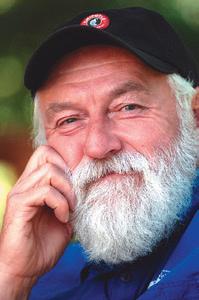

Recently, while looking through one of these folders from 2023, I was thinking about what I wanted to share this Christmas season— something joyful—and came across a photograph I made during a St. Patrick’s Day parade of a young man named Jake Wagner.
You might remember the name from a column I wrote about Special Olympics and giving of one’s time. Jake has Down syndrome. My heart leapt and my eyes watered as I revisited the first time I met this happy man.
Of the thousands I have photographed, few, if any, cause my heart to smile more than Jake.
Intelligent, loving and
caring, he embodies the pure, unpretentious joy I hunger to document and, more importantly, imitate. He is the greatest gift, the living Christmas card that brings me joy beyond description.
His mother, Betty, shared, “He is such a breath of fresh air. He is such a blessing. He has been making this world a better place since 1984.”
Holding his son’s hand, Jake’s father, Nick, agreed.
“He’s a very loving son,” he said. “He knows when you need a hug, too. He’s the best boy a father could have.”
When Jesus said, “Suffer the little children to come to me, for such is the Kingdom of God,” I am confident he had Jake in mind. n
NIKON D810, 180mm lens ISO 400, f/4.5 at 1/500
This Christmas season, see if you can capture a picture that brings you joy. It can be of happy children or grandchildren squealing with delight as they unwrap presents or somebody whose presence just makes you smile. Email your best image (just one, please) with caption information, including an explanation of how it affects you, to GPH@pur.coop. We may share submissions on our website and social media channels.











What Stauer Clients Are Saying About Our Knives

“Outstanding knife of high quality and a great price. I now have a number of your great cutlery in my growing collection!”
— Robert F.,



Richardson, TX




know you. You’re not interested in everyday, run-ofthe-mill, common cutlery. You want something with a story, a unique feature that you can brag about. We’ve got just the thing for you. Our Mighty Conifer Knife is a unique tool with a Damascus steel blade and a handle crafted from an enhanced and stabilized natural pinecone. While our competitors are charging hundreds for similar knives, we’re offering the Mighty Conifer for JUST $99! at’s what we call our Stauer Impossible Price.






Each pinecone — and therefore, each knife — has its own unique characteristics. And the back of the handle features hand tooling, a further demonstration of each piece’s individual nature.
e blade is nothing to scoff at either. Constructed of Damascus steel, a modern reworking of the legendary steel forged by ancient swordsmiths, this nearly 5-inch blade features 256 layers of steel that have been folded on top of each other to increase its durability. Our competitors are charging hundreds for boring, run-of-the-mill knives with no features worth bragging about. We’re asking JUST $99 for a knife unlike any you’ve seen before!
With its full-tang construction and high-quality genuine leather sheath, the Mighty Conifer Knife is the perfect blade for the
person who wants to stand out. CALL NOW! If you’re one of the first 700 587 callers for this ad, we’ll throw in a pair of Stauer 8x21 Compact Binoculars — a $99 value — ABSOLUTELY FREE! Satisfaction guaranteed or your money back!








EXCLUSIVE FREE Stauer 8x21 Compact Binoculars a $99 value with your purchase




Knife Speci cations:
• 9 ½" overall length. Full-tang construction
• Damascus steel blade and natural pinecone handle
• Genuine leather sheath
Mighty Conifer Knife

$299 $99* + S&P Save $200
*You must use Insider Offer Code: MCK233-01 to get this price. California residents please call regarding Proposition 65 regulations before purchasing this product.
1-800-333-2045
Your Insider Offer Code: MCK233-01



PHOTO BY NERUDOL

By Miranda Boutelle
Q: How can I save in the kitchen during the most expensive time of the year?
A: The holiday season brings opportunities to enjoy meals with friends and family, leading to more time spent in the kitchen. Whether hosting a few or a crowd, consider making new energyefficiency traditions this year with these tips to manage your energy use.
Let’s start with cooking your meal. Your electric oven is typically the highestwattage appliance in the kitchen. Yet, people usually don’t turn their ovens on for long periods of time. Assuming an average oven wattage of 3,000 and an average cost of $0.16 per kilowatt-hour, according to the United States Energy Information Administration, running your oven costs 48 cents an hour.
Let’s say you use your oven for four hours to make a special meal. That’s less than $2 of electricity. While that may not seem like a big deal now, operating your oven for four hours every day is $700 a year.
Using smaller appliances instead of your oven can help you save. A slow cooker uses between 100 and 450 watts, which is significantly less than an electric oven at 2,000 to 5,000 watts. That means you can use a slow cooker for a longer period and still use less energy.
Opt for your microwave or toaster oven to reheat or cook smaller items. The microwave uses significantly less energy than the oven. A toaster oven uses about half the energy of a conventional oven, according to Energy Star.
Do not turn on your oven and leave the door open to heat your home. This can break your oven and be a safety hazard, especially with gas ovens that can cause carbon monoxide buildup.
When cooking on the stovetop, match

Before you start cooking on your stovetop, clean the burners to ensure the appliance heats evenly, which can help you save energy. Match pots to appropriately sized burners to avoid wasting energy. PHOTO BY MARK GILLILAND
the pot or pan size to the burner. Lids help your pots retain heat, which cooks food faster and wastes less heat. Keep your stovetop clean to ensure the appliance heats evenly.
If you’re looking to upgrade your stovetop, consider switching to an induction cooktop. It uses an electromagnetic field below the surface to heat pots and pans directly. This provides more precise heat, faster cook times and higher efficiency. It can also improve the air quality in your home compared to a gas cooktop.
In my experience, people like to gather in the kitchen during parties. To avoid overheating your guests in a room that has a hot oven, turn down your thermostat a few degrees before guests arrive.
Next, let’s look for refrigerator savings. The gaskets on your refrigerator doors should make a tight seal to keep in cold air. Make sure you clean and maintain them or replace them if necessary. Don’t let frost build up in the freezer, which can decrease efficiency and make your freezer work harder to maintain a balanced temperature. Wait until food cools before putting leftovers in the fridge. Putting hot food in the refrigerator results in more energy used to cool it down. Aim for about 30 minutes of cool time. Perishable food should be refrigerated within two hours after it is cooked, according to the United States Department of Agriculture.
Setting your refrigerator colder than needed wastes energy. The U.S. Department of Energy recommends 37 degrees for the refrigerator and 0 degrees for the freezer. Use an appliance thermometer to monitor the temperature. When it comes to cleanup, run full loads of dishes in the dishwasher, being careful not to block any moving parts. Use eco mode if your dishwasher has that setting. If you are in the market for new appliances, select Energy Star models.
Whatever you choose to cook or how you cook it, keep in mind these simple tips to make your kitchen more efficient and save energy this holiday season. n
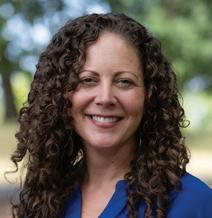
Miranda Boutelle has more than 20 years of experience helping people save energy. She has worked on energyefficiency projects from the Midwest to the West Coast.
Today, Miranda is chief operating officer at Efficiency Services Group in Oregon, a cooperatively owned energy-efficiency company.
This content was originally created by Efficiency Services Group LLC under contract with NRECA. NRECA retains ownership of this content. NRECA does not endorse Efficiency Services Group, its views herein expressed, nor any products or services it offers.
Reinforced custom-sized pond liners (39 cents/sqft). Hay covers, greenhouse covers, any width and length. Truck tarps and more. High puncture and tear strength. Best price guaranteed. Celebrating 43 years in business. www.btlliners.com. 541-447-0712. 0425
Buying antiques and collectibles: advertising signs, porcelain signs, gas pumps, beer signs, antique toys, cast-iron coin banks, neon signs and more. Jason, tjabaughman@yahoo.com or 503-310-3321. 0325
Buying American Indian collectibles, Navajo blankets and rugs, baskets, beadwork, etc. Also, quality paintings of the early Southwest and Americas. Call 760-409-3117 or send photos to amer.ind.baskets@gmail.com. 0225
Three minature wood dollhouses. Multiple accessories and furnishings. $1.2K for all. 541-584-2710. Elkton, OR. 1224
25-piece Forest Service china collection. Plates, cups, bowls, serving platters, covered sugar bowl. $2.5K. 208-305-2868. 1224
1985 Cadillac Eldorado. 110K miles. Like new. $20K. 530-233-5051. 1224
For sale: Subaru Impreza 1994. 132K miles, always kept in garage, bright red, very good condition. One owner, never an accident, $1.5K. 541-752-0522, Bill@Randallclan.net. Corvallis, OR. 1224
Books, Magazines and Videos
Holiday shopping? Idaho author Tova R. Cladouhos sells children’s books on Amazon or by email at tovarae@gmail.com. These books are perfect for elementaryaged children with factual stories based on friendship, affection, protection and farm animal adventures. Tova loves barns, pastures, dogs, cats, sheep and ponds. Her books include, “The Nine Lives of Milo the Cat,” “Saving Lily,” “Little Molly” and “Little Molly’s Secret.” 0125
Book restoration. Bibles, cookbooks, cherished family heirlooms. Beautiful work. We give renewed life, more durable than original, to last for generations. 775-537-7066; salacanstudio@gmail.com. 1224AR
Business Opportunities
Tremendous opportunity to own restaurant, bar, liquor store with pull tabs and lotto sales near Fairbanks, AK. Located near university, airport and musk ox farm. Ivory Jacks since 1975. Dick: 907-455-6666; cell 907-888-6668; dickells74@gmail.com. Website: ivoryjacksrestaurant.com. 1224
Ads 25 words or fewer are $35 a month. An extended ad of up to 35 words is $50 a month. Contact information is included in the word count. Phone numbers and emails count as one word.
Longer ads may be placed. Contact 503-357-2105 or info@pioneer.coop for pricing information.
Ads are for customers of member co-ops, public utility districts and municipals only. Subscribers and nonmembers may inquire about pricing at 503-357-2105 or info@pioneer.coop.
Ads must be direct and in first person, and are subject to approval and editing.
Closing deadlines (in our office): February issue—Dec. 30, 2024.
If submitting ad by mail, send appropriate payment with your name, address, email, phone number and the name of the electric utility that provides your magazine to: Marketplace, P.O. Box 1306, North Plains, OR 97133. Make check or money order payable to Ruralite.
We accept credit card payments for ads submitted by email. Send ad to info@pioneer.coop.
Advertisements are accepted in good faith. Pioneer Utility Resources is not
between buyers and sellers.
For sale: quaint hardware store in Maupin, OR. Inventory and interior store updated and refreshed. See ad on Bizbuysell.com or email Maupincountrystore@gmail.com. $239,999.
Turnkey cafe, pizza, bakery in the picturesque town of Cedarville, CA. Newly renovated, fully equipped commercial kitchen, cozy dining and bar room, potential mini brewpub. Priced for quick sale, $225K. Shelia, 530-569-0529. 1224
“The Big” Annual Open Exhibit Dec. 6-Feb. 1 at Art Center East in La Grande, OR. Local and regional artists. artcentereast.org. 1224
Free materials—church, government uniting, suppressing “religious liberty,” enforcing National Sunday Law. Be informed. Need mailing address only. TBS, P.O. Box 374, Ellijay, GA 30540. tbsmads@yahoo.com; 888-211-1715. 1224AR
The Cape Blanco Heritage Society needs volunteers at the Cape Blanco Lighthouse Greeting Center and Hughes House for 2025. Background checks are required. Free RV hookups are available to volunteers. heritage32@frontier.com; 541-332-0521. 1224
Hobbies, Gifts, Games
Santa letters and cheerful artwork for gift giving and holidays, made in AK. We ship high-quality gifts and custom artwork, including letter bundles, totes, jewelry, prints, cards, relief prints, tiles. GV12 saves 10%. www.PamelaSueArtandDesigns.com. 1224
Local commercial fisherman sells summer catch of preserved freshness by blast freezing at sea, gourmet canned tuna on internet. Sept.June. 100% guaranteed the best canned tuna you ever tasted. Original, jalapeno and garlic flavors available. To order: twofisherstuna.com or 206-799-1082. 0225
Granite cemetery markers at affordable prices. Will ship to most places. For more info: Joe, 541-815-8906 or highdesertmemorials@gmail. com; www.highdesertmemorials.com. 1224
Alaskan yellow cedar. Great for planter boxes, herb and flower beds, fencing or decks. Various sizes available. Pete, 541-206-0727. Lisa, 541-747-5025, ext. 21. 1224
Husky, male. 4 years old. Very gentle. Great with children. 541-875-4172. 0125
Border collie/McNab puppies. The best dog you will ever have. Males and females, $450 each. Colton, OR. 503-314-0145. 1224
Let me help you buy or sell ranch, farm and recreation property in OR. Fourthgeneration Oregonian, prior ranch owner. For sale: Sisters, OR. 40 acres. Price reduced. $1.55M. John Gill, 541-480-9161 or johngill@landandwildlife.com. Land And Wildlife brokerage. 1224
Newly constructed, beautifully finished singlelevel home with Strawberry Mountain views. $389.5K. Duke Warner Realty, 541-987-2363; ddwr@ortelco.net. 1224
Ranch, south/east Pahrump, NV. Large home for rent. 2.5 fenced acres for children, pets, horses, gardening/farming, etc. Inexpensive well water. 702-530-3720. 1224
80 acres for sale at 259 Cache Creek Road, Nespelem, WA. Water and electric available. $100K. Contact at allenmckendr@yahoo.com or 509-634-8710. 1224
20 acres located east of Montello, NV. Fully livable. Year-round access. Power and water nearby. Comes with equipment and facilities. $35K. geopup58@gmail.com. 1224
Last chance to get an undeveloped buildable lot (8,000 sqft.) in Sportsman’s Park (Wasco County, Tygh Valley, OR). Sewer to property line, water on property, power available. National forest on backside. 7 miles to Wamic. $86.6K. Eric, 971-370-0220. 1224
Bed and Birds, a guesthouse. Very private. Wet meadows, range, forest, dark sky. Lakeview, OR. Explore or ride? Near ski hill. Reasonable. 541-219-2044. 1224
Bend country cabin. Very clean and fully furnished cabin on private ranch. Close to recreation areas. Very nice. $95/night. bendcountrycabins@gmail.com; 541-382-3050. 0125
Wavecatcher: oceanfront cottage. Central Oregon coast. $175/night (plus cleaning/tax). Open April through Oct. Holds up to 6 (plus children and pets). Reservations: 541-740-2846. Wavecatcherbeachrentals.com. 1224
Getaway at either of our Airbnbs in Lenore, ID. $90 per night. We are on the Clearwater River with great fishing and hiking. Hope to see you. Cindy and Rocky Wines. 208-400-0013. www.bearcountrygetaways.com. 1224
Services
Dawn Till Dusk Masonry. Brick, block, stone and pavers. Small jobs and repairs welcome. dawntillduskconstructionmasonry.com. 541-388-7605; 541-410-6945. License #245760 bonded and insured. La Pine, OR. 1224
We all want delicious, fresh, nourishing food to feed our families. We’ve got pastured pork, corn/soy/GMO-free. Delivery to your door or drop sites. Order at www.rural-roots-ranch.com or text Christy at 541-589-4674. 1224
Situations Wanted
Northern NV RV site available. Free rent and utilities in exchange for light lawn care. Private farm. Mature trees. Orovada, NV, area. 208-250-2026. 1224
Want to Buy
Gold, silver, coins/currency, buy, sell. Collections wanted. Fair prices paid. 44 years in retail store. Baker City, OR. 800-556-2133; garrymclin@aol.com. 1025
Cash paid for old gas station and oil company signs, pumps, globes, metal oil cans. Good condition. Discreet cash settlement. Clifton Jones, collector. 512-413-4459. 0225
Looking for candle-making molds from 6 to 10 inches. Taper molds, antique metal or silicone. pfrazier0407@gmail.com; 503-880-8863. 1224
Buying American Indian collectibles, Navajo blankets and rugs, baskets, beadwork, etc. Also, quality paintings of the early Southwest and Americas. Call 760-409-3117 or send photos to amer.ind.baskets@gmail.com. 0225






By Jennah Denney
Electric vehicles are more than just a trend; they’re a shift toward a new era of transportation and energy use.
Data indicates a steady increase in EV adoption, with EVs and hybrid vehicles surpassing 16% of total 2023 U.S. light-duty vehicle sales, according to the U.S. Energy Information Administration. Additionally, as of March 2024, 17 states have exceeded 10% of the EV market share, highlighting the regional variations and potential hotspots for EV adoption.
As EVs continue to become more common, electric utilities will face new challenges and opportunities to continue providing reliable, affordable energy to consumers.
Theresa Phillips, Lassen Municipal Utility District public relations manager, says one of the biggest challenges is educating consumers.
“There is a lot of conflicting information out there regarding the abilities and limitations of EVs, especially how they perform in a cold climate like Lassen
County,” Theresa says. “Battling EV myths is a challenge, so we work with reputable sources like The Center for Sustainable Energy to provide information and resources to help our customers make informed choices.”
One of the main focuses of EV education is informing electric consumers about efficient charging practices to avoid strain on the electric grid.
Imagine traffic during rush hour—it’s crowded and slow. Our nation’s electric grid can become just as crowded when everyone charges their EVs at the same time. This major spike in energy use can lead to power outages or expensive updates to our system. However, as utilities prepare for increased electricity demand from EV use, they are tasked with solving these challenges and keeping the lights on for everyone.
Smart charging is like a traffic light for electricity—it helps manage the demand for power from EVs. Here’s how you can help if you own an EV.
Charge your EV when electricity demand
is low—such as late at night or early in the morning—to help prevent grid overload and save on your energy bills.
“If customers are using a home charging system, we encourage them not to plug in their vehicle as soon as they get home from work, say around 5-7 p.m.” Theresa says. “That’s when demand is highest for our system.
Modern EV chargers can wait to charge your car until there’s less demand for power. This helps keep the grid stable and ensures you have power when you need it.
Some EV chargers can adjust how fast they charge your vehicle based on how much power is available. This helps avoid grid congestion and the need for expensive upgrades.
Managing the EV transition on the electric grid brings many challenges, as well as many opportunities for growth and working together. Contact your utility for help in understanding how EVs and the

grid affect each other.
It’s crucial for utilities to identify and track the EVs within local networks. Knowing how many EVs are charging on a system allows for better planning and helps ensure a more stable supply of electricity.
“As more and more folks adopt the technology, we’ll need to track the locations to avoid pressure on the system,” Theresa says. “For example, if several homes served by the same transformer all plug in at the same time, the transformer could overload, causing power interruptions.”
When EV charging patterns are predicted, utilities can maintain a more efficient and reliable power grid.
“If we know that the neighborhood has several EVs, we can upgrade transformers and other equipment to ensure that power keeps flowing smoothly to everyone,” she says.
Additionally, when utilities have local, detailed data, they can design EV programs that fit their communities’ specific needs, encourage responsible energy use and offer additional cost savings to consumers.
If you’re considering an EV and have questions about home charging, contact your local utility for guidance. n
The automotive industry is undergoing a transformative shift as many consumers are making the switch to electric vehicles. Electric vehicles offer numerous benefits, from environmental sustainability to cost savings.
Transitioning to an EV requires careful consideration of multiple factors. The following list highlights key aspects of EV ownership and can help you make an informed decision based on your specific needs.
EV knowledge: Familiarize yourself with EV basics. Understand the differences between battery electric vehicles, plug-in hybrid electric vehicles and fuel cell electric vehicles. Consider your daily, monthly and annual driving needs and evaluate each option.
Driving range: Evaluate the EV’s driving range when fully charged to ensure it aligns with your daily commute. We often think about a summer road trip for our driving needs, but it’s important to remember there are other options for infrequent, long-distance travel.
Home charging: Determine if you will need to install a Level 2 charger and if your home’s electrical system is compatible. By evaluating your whole home energy use, you can determine if electrical panel upgrades are necessary for a Level 2 system. Level 1 chargers typically do not require upgrades.
Public charging options: Research the availability of public charging stations along your typical routes.
Cost comparisons: Compare EV prices from multiple dealerships. Sticker prices are higher up front, but EVs have proven to be cost-effective due to reduced maintenance and fuel costs.
Financial incentives: Explore federal, state and local incentives available for EV purchases. Check with your electric co-op to see if it offers incentives or special rates for EVs.
Maintenance: EVs typically require less maintenance than conventional vehicles, which can lead to long-term savings. EVs have far fewer moving parts than combustion-engine vehicles, resulting in a streamlined maintenance experience.
Battery warranty: Ensure the EV battery includes a substantial warranty. Most manufacturers offer eight-year warranties (or up to 100,000 miles). If you’re considering managed charging or bidirection power flow (V2X) programs, take these warranties into account. V2X programs facilitate a bidirectional power flow between EVs and the power grid, which is highly beneficial for people who own EVs. These programs allow EV owners to sell power back to the grid during periods of high-electricity demand. Participation in these programs may impact your vehicle’s warranty, so it’s recommended to consult the warranty documentation before participating in a V2X program.
Insurance implications: Consult with your insurance provider to review potential changes to your policy when owning an EV.
Fees: Some plug-in electric vehicles are subject to additional fees to compensate for road tax revenue that is typically collected from gasoline taxes. Additionally, you may have to pay a higher vehicle registration fee for EVs and hybrid vehicles. It’s important to be aware of these potential fees when considering the total cost of ownership for an EV.
EV ownership offers many benefits. EVs often have fewer restrictions in high occupancy vehicle lanes, allowing for quicker commutes. EVs are exempt from certain inspections due to their lack of an internal combustion engine, and they require no oil changes, leading to lower maintenance costs. And owning an EV is a fun experience—drivers can enjoy a fast-accelerating, quieter ride.
If you’re interested in an EV, reach out to your electric utility. Many utilities offer “ride and drive” events, home charging programs and more, allowing consumers to gain firsthand experience and determine if an EV is right for them.
In Ruralite magazine’s July 2024 Reader Exchange, Kathy Heitkemper asked for Christmas-themed hankies for an art project. The photo at right, made with 35 hankies, is the result of her talent combined with our readers’ generosity.
Seventeen readers sent 53 hankies, though not all were Christmas-themed.
“I have been holding on to these way too long,” wrote a reader from Aguanga, California. “I am sending them in their original boxes ... they were my aunt’s. She lived in St. Paul, Minn.”
A cousin of Kathy’s husband read the request and sent two hankies, adding a special family tie to her tree.
“I just so much appreciate all those who contributed to this long-lasting Christmas project,” Kathy says. n

At Pioneer Utility Resources, the publisher of Ruralite magazine, we are always working to put the right letters together to tell a story. The American Red Cross story can’t be told without three letters: A, B and O. They represent the main blood types. When those important letters are missing from blood bank shelves, lives are at stake.
With the recent hurricanes in Florida adding to the need for blood nationwide, we encourage each of you to consider donating blood by rolling up your sleeves and visiting a local Red Cross donation center before Dec. 25. Your gift of blood can save more than one life.
Visit https://rcblood.org/3zJ1rxU or scan the QR code to the right to sign up to help us reach our goal. Fill in the missing blood types so patients can receive the lifesaving care they need. Make and keep an appointment to give blood to the American Red Cross. n

https://rcblood.org/3zJ1rxU


Get more than 220 recipes in a perfect-bound 8½-by-11-inch indexed book for $10, postage included.
BY MAIL: Send payment and number of cookbooks wanted, along with your name and address, to Ruralite Cookbooks, P.O. Box 1306, North Plains, OR 97133. BY PHONE: with Visa, MasterCard, Discover card or American Express.

This 8½-by-11-inch indexed cookbook features yeast breads, quick breads, scones and specialty breads for $10 (includes postage).

TO ORDER BY MAIL: Submit payment with cookbook title, your name, address and number of cookbooks wanted to: Ruralite Cookbooks P.O. Box 1306 North Plains, OR 97133
TO PAY BY PHONE: Call 503-357-2105 for credit card payments with Visa, MasterCard, Discover or American Express.
TO ORDER ONLINE: Visit www.ruralite.com. Please allow two to three weeks for delivery.



652 Rose Ave. P.O. Box 69
Vernonia, OR 97064
503-429-3021
Toll free 800-777-1276 www.westoregon.org
Office Hours:
Monday through Friday
8 a.m. to 4 p.m.
Closed for lunch from noon to 1 p.m.
BOARD OF DIRECTORS
President Jim Buxton (District 3 – Vernonia, Keasey)
Vice President Patricia Jordan (District 1 – Jewell, Elsie, Hamlet)
Secretary/Treasurer Mark Ludeman (District 7 – Manning, Hagg Lake, Yamhill County)
Paul Seamons
(District 2 – Mist, Apiary, Birkenfeld)
Brett Costley (District 4 – Vernonia)
Ray Taber
(District 5 – Timber, Buxton)
Jolene Jonas (District 6 – Chapman, Scappoose)
GENERAL MANAGER
Billi Kohler
CHIEF FINANCIAL OFFICER
Daniel Huggett
ENGINEERING & OPERATIONS MANAGER
Andrew Larson
ADMINISTRATIVE SERVICES MANAGER/HR
Laura Hein
Board meetings are at 5 p.m. the fourth Tuesday of each month. Members are welcome.
OR-14
Dear Members,
As December kicks off, we’ll soon be gathering with family and friends to celebrate the holiday season. This festive time of year brings joy and warmth, but as the weather cools and we spend more time indoors, the holidays can also bring increased energy use and a higher risk of electrical and fire hazards.
As your local electric cooperative, our team at West Oregon Electric Cooperative cares about your well-being. This month, I’d like to share a few practical tips to help you stay safe and efficient during the holiday season.

Many families enjoy decorating their homes for the holidays. Before you deck the halls, always check electrical cords and light strands to make sure they aren’t frayed or damaged. This will give you peace of mind, knowing your holiday lights are ready to brighten your home safely. I also recommend double-checking the lights you use outside to make sure they’re rated for outdoor use.
Many households also enjoy lighting holiday-scented candles. While festive, candles can create fire hazards and should never be left unattended.
One of the best and easiest ways to safeguard your home is to test smoke alarms often. An easy-to-remember rule of thumb is to test them on the first of each month. Testing smoke alarms takes only a few seconds and could save lives, so make it a habit.
Spending more time indoors with more guests can impact home energy use. By taking a few small steps to save energy during the holiday season, you can keep your bills reasonable.
Keep an eye on the thermostat. Because heating and cooling consume the most home energy, the thermostat is one of the best places for savings. Lower it a few degrees, especially when you have family or friends stopping by. Good company brings additional warmth to your home.
You can also save energy by decorating with LED holiday lights. LEDs are the most energy-efficient lighting options available, and they last longer than traditional bulbs.
There’s no denying one of the best parts of the holiday season is the food—not just the meals, but the time we spend together in the kitchen.
There are many ways to save in the kitchen, but one of the best approaches is to cook with smaller countertop appliances, such as air fryers, slow cookers and toaster ovens. These appliances consume a fraction of the energy used to heat the oven.
I hope you implement some of these energy-saving and safety tips into your holiday plans.
From your friends at West Oregon Electric, we hope your holiday season is merry and bright.
Billi Kohler General Manager